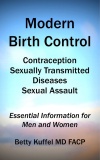Men and women use methods of birth control today that were outlawed under the Comstock Act of 1873. Talking about birth control or sending literature through the mail was deemed pornographic and resulted in prison. It wasn’t until 1972 that Supreme Court struck down the last portion of the oppressive law. Most people today are unaware of the progress we have made and what we are about to lose if conservative legislators have their way and once again impose their views on everyone by defunding healthcare, specifically healthcare for women.
This is the first of a two part blog with excerpts from Modern Birth Control.
THEN
Part One
In 1848, a conference attracted three-hundred women and men who met to gain women the right to vote. It took seventy-two bitter years of activism, hunger strikes, arrests and fighting obstruction for women to prevail. Congress finally passed the Nineteenth Amendment to the U.S. Constitution giving women the right to vote in 1920.
While early activists fought for a woman’s right to vote, another group of feminists spent their lives helping women obtain sex education and access to birth control. One of those women, Margaret Sanger, grew up in a household of poverty with ten siblings. Her mother had eighteen pregnancies.
In 1902, Margaret began working as a nurse, and later a midwife. She cared for chronically pregnant poor women living in the tenements of New York who begged her for information to help stop unwanted pregnancies.
Sanger’s book, Motherhood in Bondage, contains hundreds of letters from hopeless women across the country imploring her to help them limit the number of children they bore. Most of the them wrote of being married as teenagers and bearing a child each year. One 43-year-old woman with nineteen children had begged her doctor for contraceptive information, only to be told to be careful. Stories included child-mothers escaping poverty to marry and having a child before their thirteenth birthday. One, married at age fourteen, had fourteen living children, many miscarriages, and failing health due to multiple pregnancies and poverty.
The women’s plight incited Margaret’s actions, but by talking about birth control she risked imprisonment under the Comstock Act of 1873. That draconian law made it illegal to discuss, produce, print or use the U.S. Postal Service to mail any literature or product pertaining to the body related to birth control and venereal disease, rampant before the age of antibiotics. Anatomy textbooks being sent to medical students were prohibited and confiscated. Doctors failed to educate women about ovulation and contraception because they could be jailed for discussing the topics.
Anthony Comstock, the influential politician and religious zealot who became a U. S. Postal Inspector, considered Sanger’s pamphlets on sex education and clinics providing contraception advice to be obscene and pornographic. His imposed religious views set medical education and U.S. public health back decades.
After her arrest for publishing and distributing contraceptive information, Margaret fled to Europe under an assumed name to avoid prosecution that could have carried up to a 45-year sentence. She studied methods of contraception in the Netherlands and returned to open the first U.S. birth control clinic in New York City in 1916. She and her sister Ethel Byre, also a nurse, provided contraceptive information and treated 486 patients in ten days, before the NYPD Comstock Vice Squad swept in to arrest the nurses and patients.
Ethel nearly died in jail during a hunger strike to raise awareness for their cause. Margaret was sentenced to the penitentiary for thirty days and upon release, reopened her clinic in protest. She founded the American Birth Control League in 1922 that eventually became Planned Parenthood of America.
Margaret Sanger’s desire to help women fueled her lifelong activism to teach contraceptive methods and advance sex education. The Catholic Church considered Margaret an enemy and opposed her work, but she had seen what continual pregnancies had done to her devout mother and others in poverty, producing huge families.
Support and fortunes of philanthropic people like International Harvester heir Katherine McCormick, John D. Rockefeller, and Margaret’s second husband, oil magnate James Noah Slee, fueled her campaigns for birth control and research for an oral contraceptive. Sanger and McCormick both lived to see the success of their efforts when the FDA approved the first oral contraceptive, Enovid, in 1960.
In 1972, the Supreme Court finally struck down the last of the oppressive Comstock law that restricted doctors from prescribing oral contraceptives to unmarried women ending nearly one hundred years of Comstock tyranny.
 Modern Birth Control provides basic biology of reproduction and the latest contraceptive options for men and women. Sexually Transmitted Disease is included, with information about sexual assault avoidance and reporting. The booklet is available from Amazon in both e-book and paperback.
Modern Birth Control provides basic biology of reproduction and the latest contraceptive options for men and women. Sexually Transmitted Disease is included, with information about sexual assault avoidance and reporting. The booklet is available from Amazon in both e-book and paperback.
http://tinyurl.com/ModernBC-Kindle
http://tinyurl.com/ModernBC
Thanks for stopping by.
Part Two will be posted tomorrow.
Betty Kuffel, MD



 and women. The small booklet provides up-to-date information on aspects of health related to contraception, sexually transmitted diseases, treatment, and avoidance of sexual assault. Many references are included. The 44 page book is available on Amazon. Paperback –
and women. The small booklet provides up-to-date information on aspects of health related to contraception, sexually transmitted diseases, treatment, and avoidance of sexual assault. Many references are included. The 44 page book is available on Amazon. Paperback – 